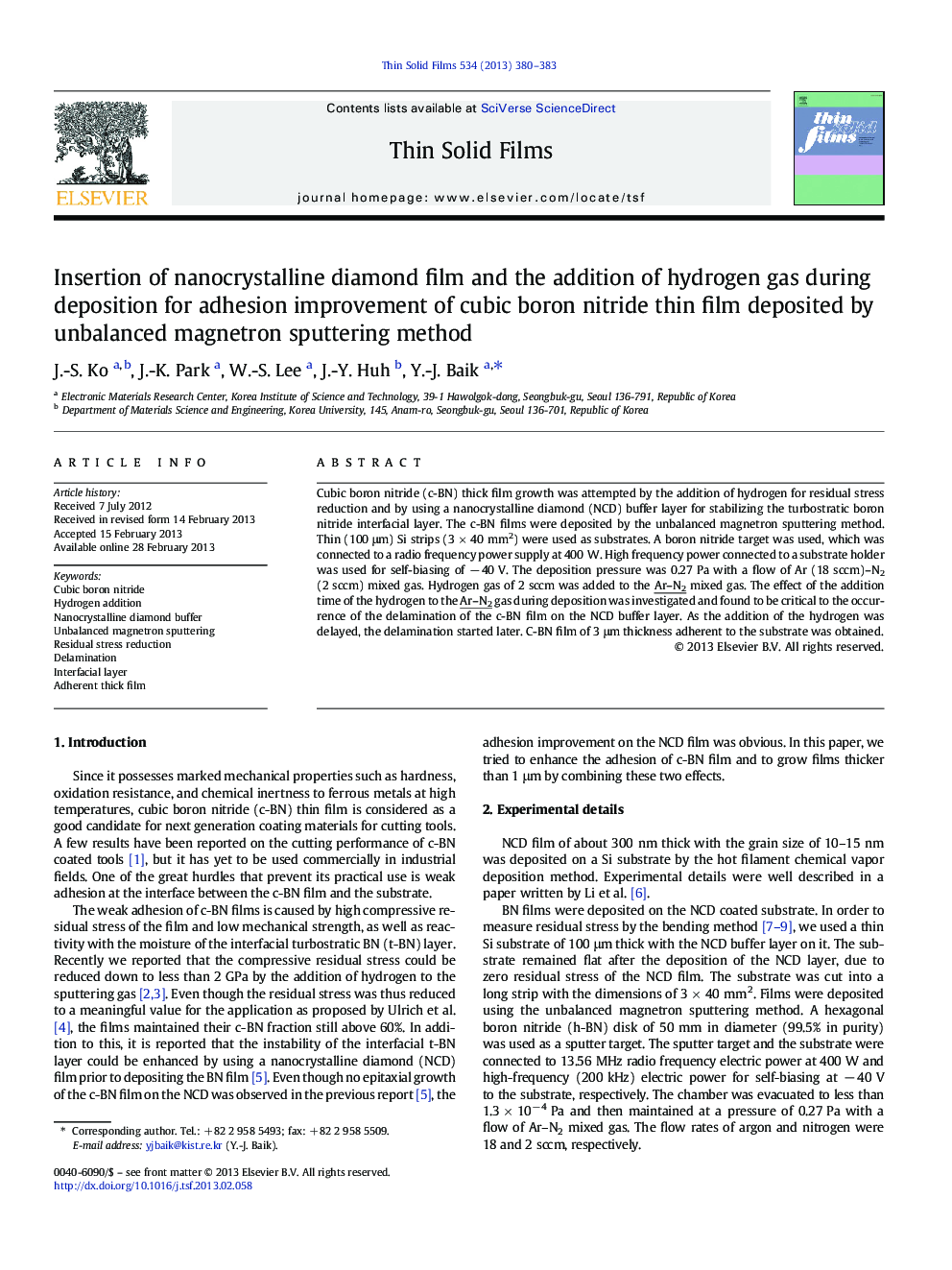| Article ID | Journal | Published Year | Pages | File Type |
|---|---|---|---|---|
| 1666299 | Thin Solid Films | 2013 | 4 Pages |
•A nanocrystalline diamond (NCD) buffer layer was applied to enhance the adhesion.•Hydrogen in the reaction gas caused delamination of the film at c-BN/NCD interface.•A delayed hydrogen addition was effective in inhibiting such delamination.•About 3 μm thick c-BN film could be grown.
Cubic boron nitride (c-BN) thick film growth was attempted by the addition of hydrogen for residual stress reduction and by using a nanocrystalline diamond (NCD) buffer layer for stabilizing the turbostratic boron nitride interfacial layer. The c-BN films were deposited by the unbalanced magnetron sputtering method. Thin (100 μm) Si strips (3 × 40 mm2) were used as substrates. A boron nitride target was used, which was connected to a radio frequency power supply at 400 W. High frequency power connected to a substrate holder was used for self-biasing of − 40 V. The deposition pressure was 0.27 Pa with a flow of Ar (18 sccm)–N2 (2 sccm) mixed gas. Hydrogen gas of 2 sccm was added to the Ar–N2 mixed gas. The effect of the addition time of the hydrogen to the Ar–N2 gas during deposition was investigated and found to be critical to the occurrence of the delamination of the c-BN film on the NCD buffer layer. As the addition of the hydrogen was delayed, the delamination started later. C-BN film of 3 μm thickness adherent to the substrate was obtained.
